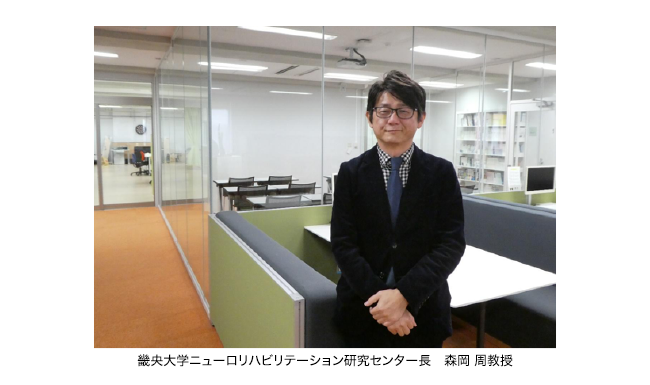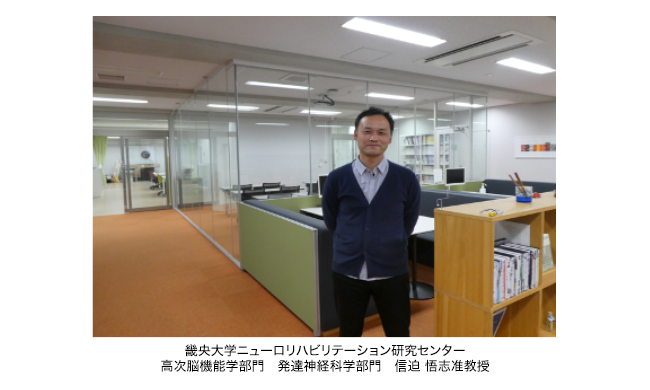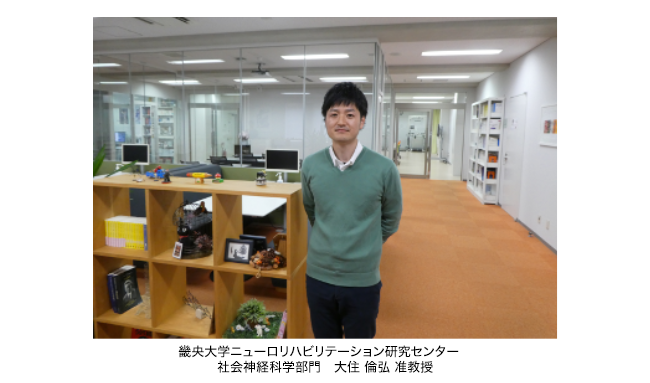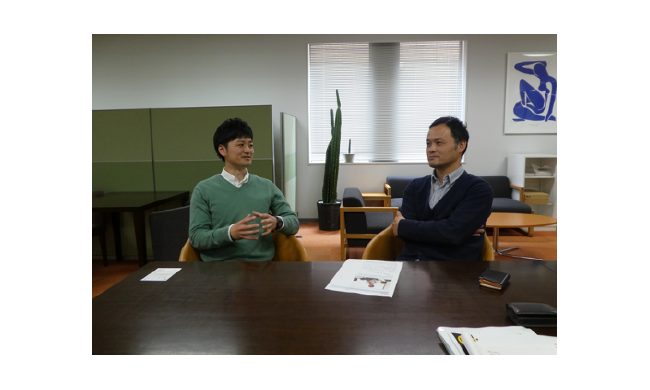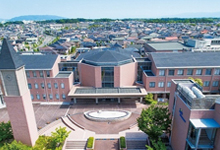Kio University opened the Faculty of Health Sciences in Koryo-cho, Kitakatsuragi-gun, Nara Prefecture in 2003, and started as a four-year university.Since then, with the themes of "health" and "education," we have steadily achieved results with the aim of "cultivating specialists who will support tomorrow" that will creatively contribute to the development of local and international communities.Among them, the Department of Physical Therapy, which was established for the first time in Kansai as a four-year private university, has faculty members who lead the industry in research achievements as front runners of physical therapy, and produces human resources who will support the future of physical therapy. ..Based on these achievements, in 4, the "Kio University Neurorehabilitation Center" was established with the aim of becoming a core base for research in the field of "neurorehabilitation", which is drawing attention in the field of physical therapy.We interviewed Professor Shu Morioka (Professor, Department of Physical Therapy, Faculty of Health Sciences), who is the director of the research center, about the purpose of establishing and operating the center and the neurorehabilitation that Kio University thinks.
To a rehabilitation research / educational institution that constantly thinks about "what is a human being"
─ Please tell us how Kio University, which has a proven track record as a pioneer in physical therapy education at a four-year private university in Kansai, opened the "Neurorehabilitation Research Center".
Professor Morioka: "Neurorehabilitation is rehabilitation that applies brain science and neuroscience, which have achieved remarkable development in recent years. In the world of physical therapy so far, so-called rehabilitation, motor function has declined due to various factors. The mainstream idea was to encourage people to recover their joint and muscle movements through physical training.
But why do some people get the same rehabilitation method and some don't?Perhaps rehabilitation is largely related to the function of damaged brains and nerves-these questions are gradually being answered by the development of brain and neuroscience over the last 20 years. ..In other words, it has been shown that it is important to study not only the limbs whose motor function has deteriorated due to hemp, but also the mechanism of the brain as a command tower for movement, and to utilize the knowledge obtained from it for rehabilitation.
However, at present, there is not enough environment for physical / occupational therapists or speech therapists to learn and study the latest knowledge.Students aiming for this field in the future also need a place to learn the importance and skills of neurorehabilitation.
We at Kio University have a solid track record of physical therapy education that we have accumulated as a four-year university.I felt that I had a responsibility to research cutting-edge neurorehabilitation by making the best use of that soil and to disseminate it correctly, so I decided to open this center in 2013. The hardware aspects of the facility and equipment were completed in 2014.We are working with the goal of playing the role of a platform that "connects research and practice" in collaboration with medical institutions and educational institutions, and have achieved many results.
─ It seems that the Neurorehabilitation Research Center is conducting research and information dissemination in various fields, including the field of brain science.
Professor Morioka: "This research center consists of four departments: higher brain function department, social neuroscience department, physical motor control department, and developmental neuroscience department.
Higher brain dysfunction is a discipline that elucidates the mechanism of so-called cognition, including perception, memory, learning, and the psychology that accompanies them.It is said that there are less than 30 people nationwide with "higher brain dysfunction" whose cognitive function is impaired due to cerebrovascular disease or brain trauma, and rehabilitation for these is an urgent social need.
Social neuroscience is an unfamiliar discipline, but it focuses on studying human social behavior from both neuroscience and social science approaches.Physical movement control is a discipline that scientifically captures human movements and studies the control mechanism of the body from a neurological point of view.
Developmental neuroscience is a new discipline that attempts to analyze the developmental process of humans, from babies to adults and the elderly, both physically and mentally.
All four departments are deeply interrelated and cannot be clearly separated.By advancing research by integrating each department, the need for rehabilitation will increase further in the future. (4) Movement disorders due to brain damage and nerve degeneration (XNUMX) Higher brain dysfunction (XNUMX) Chronic diseases and nerves Chronic pain due to diseases such as (XNUMX) Focusing on diffuse development disorders caused by brain dysfunction, we aim to elucidate these neural mechanisms and clarify functional recovery models.Based on the knowledge obtained in this way, I would like to develop effective "neurorehabilitation" and conduct practical research in clinical and educational settings.
─ As the need for rehabilitation increases, what are your thoughts on the possibilities and challenges of future neurorehabilitation?
Professor Morioka: "In Japan, as social structure changes rapidly in all aspects such as population composition, life, economy, labor, and education, medical care also faces major challenges. One of the solutions is the next generation. I strongly feel that it is the mission of our specialists and research and educational institutions such as universities to develop and disseminate rehabilitation. In recent years, medical engineering technology for imaging (visualizing) brain function has evolved. Significant progress in brain function analysis has been a tailwind for neurorehabilitation.
The brain has a nervous system function called "plasticity" that can change its structure and function by itself in order to respond to various environments.Applying this, for example, if one side of the limb occurs due to cerebral hemorrhage, if you repeatedly practice understanding and utilizing its plasticity, the brain will form a new network, and improvement of motor function can be expected based on it. That's why.
So to speak, the relationship between the brain and the body is like an engine and tires that function in both directions, like a car.The tires rotate under the command of the engine, but on rough roads, the tires change the way they run and convey this to the brain, where the brain learns new things.In conventional rehabilitation, only the tires were tried to move well, but by knowing the structure and capabilities of the engine properly, the possibilities of new rehabilitation have expanded.
The question is how to create an environment to drive the engine.Of course, technique is important for rehabilitation, but the self-consciousness of the patient who wants to improve is the most important.Therapists, such as physiotherapists, cannot reach for the patient's brain and start the engine directly.It can be said that the major research subject of neurorehabilitation is to clarify effective communication and cognitive stimulation for how to influence the motivation of patients and turn the awareness of rehabilitation into on mode.Therefore, our research center is focusing on interdisciplinary research in areas such as psychology, behavioral science, and sociology, which are considered to be far from brain science. "
─ I understand why your research center covers a wide range of fields.It seems that the neurorehabilitation-related events organized by the center are also receiving a lot of attention every time.
Professor Morioka: "The history of medical rehabilitation itself has only just begun around the 1950s, and the know-how gained from empirical rules occupies the mainstream, and it is in an immature state as an academic discipline. Universities are educational institutions and research institutions. Furthermore, we are in a position to widely disseminate the results to the outside. The large-scale neurorehabilitation seminars and forums that have been held since 2013 are held in various occupations including those involved in physical therapy and occupational therapy. It is a situation where people fill up quickly every time. We also hold a publicly recruited study group, which is positioned as a subcommittee, and it is highly evaluated as a place where clinical and research can seamlessly exchange information. We hold "Kio University Senior Lectures" for the elderly to provide opportunities for them to learn about the brain gently. "
─ What kind of institution do you want to make the Kio University Neurorehabilitation Research Center for the future?
Professor Morioka: "The etymology of rehabilitation is Latin, which means" to live like a human again. "At our research center, we call it a neuro, but we are conducting research and education with an awareness of rehabilitation intended for human rehabilitation.In recent years, excellent AI and robots have been introduced to rehabilitation one after another due to the evolution of technology, but if the person who uses it, that is, the target person itself does not actively work on rehabilitation, it will be a treasure trove and a clinic in the city. Then, it will be difficult to introduce cutting-edge equipment such as university hospitals.
The optimal solution for rehabilitation is different for each person.Neurorehabilitation is a means of exploring it effectively, transforming human consciousness and behavior, and approaching the optimal solution.The know-how gained in clinical practice will be reflected in research to create new methods and hardware, and how to customize them and introduce them to the field and apply them to individual patients to help "human rehabilitation". This is the role of this research center.It is also our responsibility to raise the therapists' self-esteem for rehabilitation and to bottom up their specialized knowledge and skills.
In other words, we would like to make it a research center that constantly thinks about "what is a human being" with these three pillars of activity: research-based, education-based, and social contribution-based to the community.For that purpose, satellite institutions in various R & D fields such as medical equipment, nursing care equipment, IoT-related, etc., as well as cooperation with medical institutions such as hospitals, gather at this research center and have dynamic interaction, not just the function as a university. Birth ─ Building such an industry-academia collaboration system is your vision for the future. "
One of the strengths of our university is that we can quickly return the results of the research center to education and the community.
We also spoke with Associate Professor Satoshi Nobusaki and Associate Professor Norihiro Osumi, who have accumulated clinical careers as physiotherapists and are currently supporting the Neurorehabilitation Research Center of Kio University.
─ At the Neurorehabilitation Research Center, Kiou University, Dr. Nobusaki is mainly engaged in clinical research in the higher brain function and developmental neuroscience departments, and Dr. Ozumi is in the social neuroscience department.Please tell us about your specialty and activities at the center.
Associate Professor Nobusako: "I was working at a hospital as a physiotherapist, but while I was mainly involved in the clinical practice of neurosurgery, I realized the importance of neuroscience in rehabilitation. We are mainly conducting basic research on neurosurgery related to higher brain dysfunction and developmental disorders, and clinical research as an application.
By visiting a special support class that I had been involved in since I was working at a hospital, I learned about the existence of children with developmental disabilities such as ADHD and learning disabilities, and now I want to utilize my knowledge of neuroscience for their support and habituation. rice field.In particular, we are conducting research from the perspective of neurorehabilitation on children with developmental coordination disorder (DCD), which is a movement that moves each part of the body separately, such as jump rope and radio calisthenics, and children who are extremely unable to work with their hands. We are.We hope that our research center will provide scientific evidence on these obstacles, which are not well known in the field of education, and how to relate to children.As Professor Morioka has always said, motivation is very important for rehabilitation.Especially for children, intellectual curiosity, interests, and interests are very important, and it has become clear that fun activities such as games and virtual reality are effective for children's habituation. "
Associate Professor Ozumi: "Like Professor Shinsako, as I continued my clinical practice as a physiotherapist, I became interested in the mechanism of" pain "and wanted to study pain.Currently, I am conducting research on effective rehabilitation for phantom limb pain, which is a pain that a person with amputated hands or feet feels as if they still have their hands or feet.For patients with phantom limb pain, the Research Center is repeating trials to see how the pain changes by trying to move the invisible phantom limb.In addition, as an activity targeting the community, we hold a class on "back pain," which is popular among pain.The purpose is to encourage behavior change to prevention and countermeasures by changing your thinking about back pain.Brain science is deeply involved in preventing illness. "
─ It is also an important mission of the Neuro-Rehabilitation Research Center of Kio University to widely promote "behavior modification," which is the cornerstone of rehabilitation.
Associate Professor Ozumi: "I think it is very epoch-making to establish and operate a research center at a private university like Kio University. Taking advantage of its compact scale, rehabilitation for local residents I would like to focus on activities that have set foot on the ground, such as holding hands-on classes and communicating the knowledge and practice of rehabilitation based on brain science in an easy-to-understand manner. "
Associate Professor Nobusako: "In the area of developmental disabilities, it is possible to find out what factors affect development and what kind of support or habitation can contribute to enriching the child's life. This is my goal. With this research center as one core, I hope to be able to carry out activities to improve the environment surrounding developmental disabilities, such as the children, families, and schools involved. Of course, we believe that the strength of this research center is that we can quickly give back to the community and society. "
─ Thank you.


